15 Smart Design Choices for Cold Climates
http://decor-ideas.org 12/27/2013 13:40 Decor Ideas
Ice dams, burst pipes, drafty rooms, dangerously slick stairways — if you live in a chilly climate, you’ve probably had to deal with at least one of these problems at some point. Thankfully, there are some design moves that can help you avoid (or at least mitigate) common winter woes. Here are 15 key design and construction moves that are tailor made for winter climates.
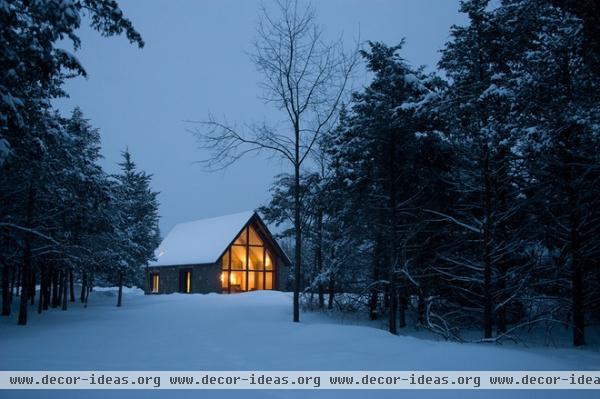
The Roof
1. A simple gable is best. Complicated roof designs invite problems — pine needles, snow and ice can accumulate in nooks and crannies, causing major damage. A simple gable roof is strong and sturdy, and sheds snow easily.
2. Avoid openings in the roof. Know that each hole you cut into your roof, whether for a skylight, chimney or gable, creates a potential spot for leaks and ice accumulation. That’s not to say you should never add these features to your home; just do so with caution and full knowledge.
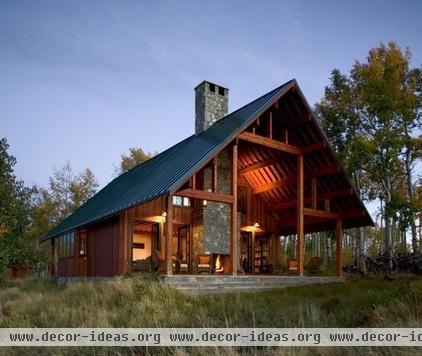
3. Place chimneys near the roof ridge. The highest point on your roof is also the safest place for things like a chimney or vent pipe to go. Since water and snow run down the roof and collect along the eaves, the top is the least-likely spot for snow and ice to build up and cause a leak.
4. Choose a metal roof. It’s the most durable option, sheds snow with ease and rarely springs a leak. Asphalt shingles also stand up well in harsh winters and are less costly to repair than wood or slate shingles.
5. Provide a place where your roof can shed snow safely. Metal roofs can shed snow so quickly, it can cause another problem — giant snow piles surrounding the house! Be sure to include ample space beneath the roofline for this purpose, and provide a safe walking path not directly below the eaves.
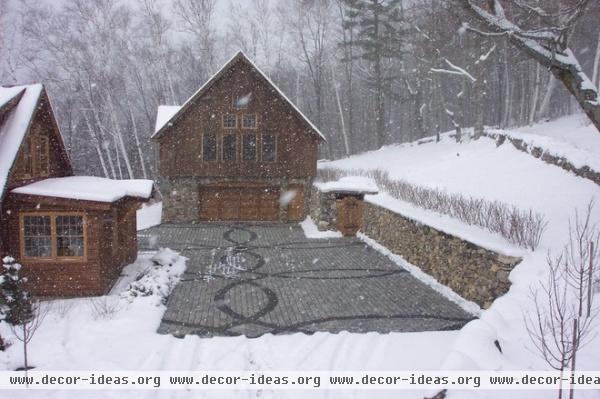
The Exterior
6. Install a snow-melting system beneath frequently used paths. This technology can greatly reduce the time and money you spend shoveling and plowing your paths and driveway, and make them safer to boot. It’s not cheap, but it may be worth it if you spend a great deal of money and effort on snow removal each winter.
7. Choose easy-to-shovel paths. Gravel paths may look beautiful, but they are nearly impossible to shovel. Which is fine if you use them only in the backyard or other areas you do not need to access in winter — but for your main paths, choosing a hard material makes more sense. Also remember to make paths wide enough to shovel.
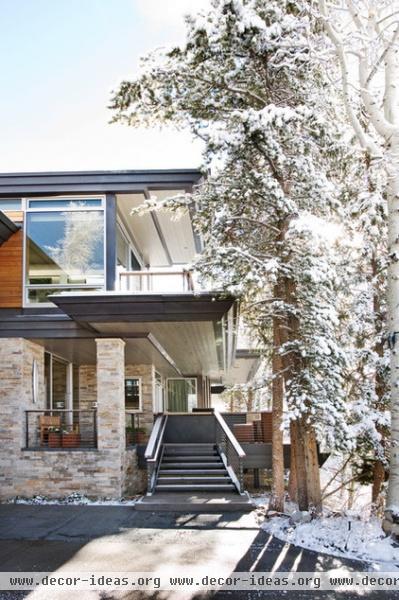
8. Position railings at every stairway. Even short stairways can become treacherous when they’re covered in ice and snow. Be sure every exterior stairway has a sturdy railing to hold on to — don’t forget the side and back entrances to your house, too.
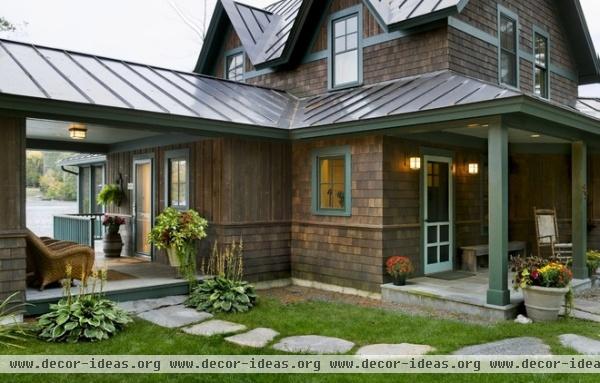
9. Provide cover over entrances. A sheltered entrance makes is safer and more comfortable for you — and for visitors waiting for you to answer your door. Think about adding a portico, covered porch or covered breezeway to your home.
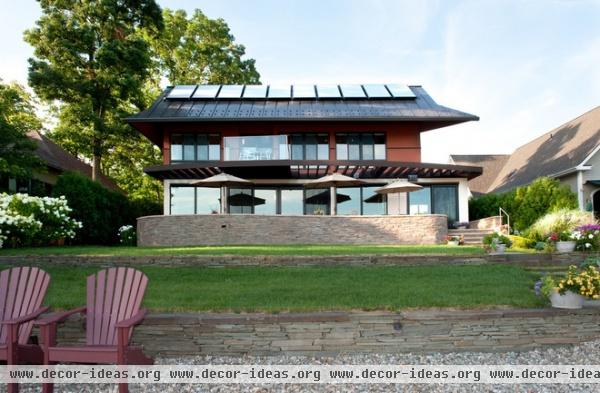
Heating
10. Active solar. Live in a region with chilly winters but plenty of sunlight? Harness that energy by installing solar panels on your roof, and you may be able to cut way down on your heating bill. An active solar heating system (which usually includes panels as well as a storage tank of heated liquid) can collect and store energy from the sun, which can then be used to heat your home through radiant heat in the floors or baseboard heaters.
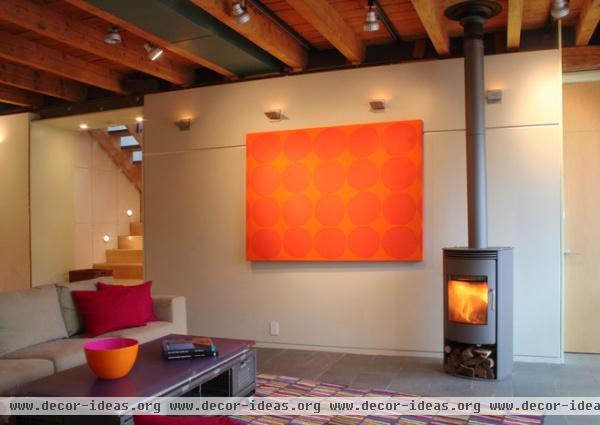
11. An efficient woodstove. Some of the newest woodstoves and pellet stoves are extremely efficient and clean-burning, making a woodstove an appealing option for heating a cold-climate home — especially if you have easy access to firewood.
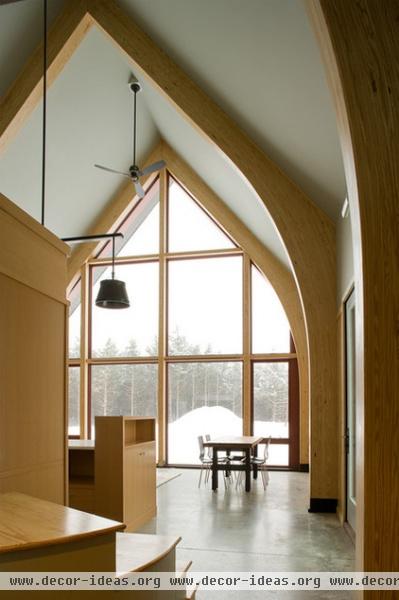
12. Radiant heat. This heating system is installed below the floors of a home, providing an efficient heat source — and making toes nice and warm.
Windows
13. South-facing windows. Maximize sunlight with banks of windows positioned on the south-facing side of your home to take in the most light and warmth each day. On the north side, windows should be minimal. Each position has different requirements in terms of glazing, so talk to a window pro to get advice that’s specific to your home.
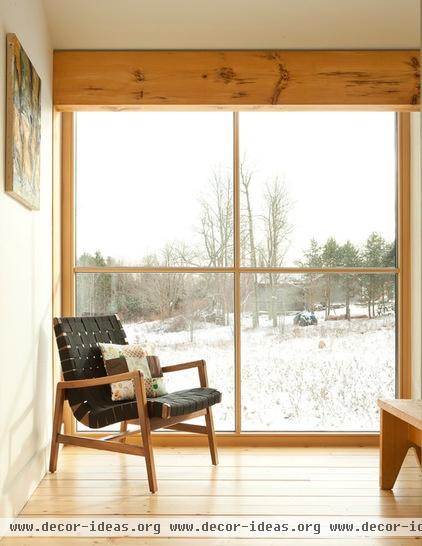
14. The right window style. Classic single- and double-hung windows, as well as sliding windows, tend to leak more air. Choose awning, casement or fixed windows for a tighter seal.
Plumbing
15. Well-insulated pipes. Avoid the dreaded pipe-bursting scenario by making sure your pipes are in insulated walls and are well away from unprotected areas. Any pipes near uninsulated areas should be well wrapped with insulation to protect them from freezing.
Tell us: Do you live in a cold climate? Share your tips for winter living in the Comments.
Related Articles Recommended












